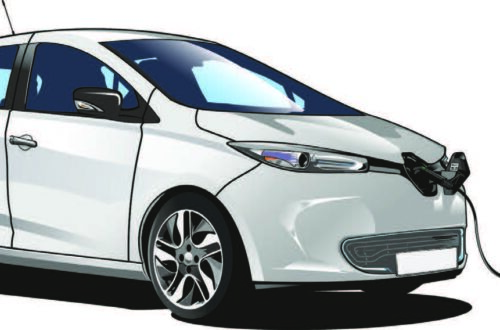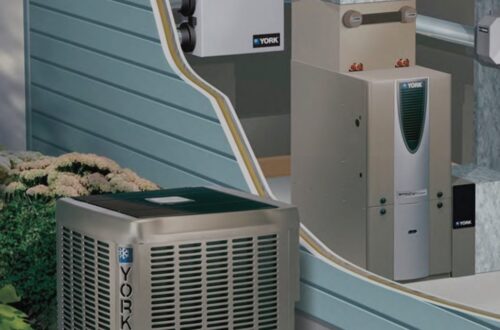Spending time indoors invokes a sense of calm, urging homeowners to unwind from the stress out in the world. Make your home a true sanctuary by prioritizing your indoor air quality.
There are various sources of indoor air pollution, such as building materials or smoking habits. Preventive methods like only smoking outdoors can minimize these contaminants, but there may still be existing chemicals from unknown sources.
Start by testing the air quality in your home, either by using a DIY kit or calling in a professional. From there, you can work toward naturally purifying your home atmosphere using six methods.
1. Keep the Space Clean
One of the best ways to purify indoor air is by keeping a tidy home — less dirt means fewer pollutants. Unfortunately, only 38% of millennials prioritize dusting despite 80% knowing dust exposure can impact their overall wellness.
Start by decluttering your home, as items create a surface area for dust to cling to. Organize your belongings into cabinets and boxes, and give away the excess.
Dust, sweep, and vacuum your home to eliminate lingering dust bunnies. Gather your cleaning supplies and work on wiping hard-to-reach surfaces thoroughly. Use products with natural ingredients to minimize further damage to your home’s indoor air quality.
2. Increase Ventilation
Homes are closed compartments capable of accumulating polluted air. Improving ventilation can help improve moisture and odor control while introducing fresh outdoor air within your personal space. Try these steps to boost ventilation:
- Open windows: Open windows in the morning and afternoon. This lowers the concentration of airborne viruses in the long run as you increase the space for airflow. Rooms without windows may have passive vents to introduce fresh air circulation.
- Leave doors open: Keep interior doors open to improve circulation and avoid stuffy, still air. If you have a centralized HVAC system, open doors will also minimize disruption to the airflow.
- Turn on fans: Another way to improve airflow and ventilation is to turn on ceiling fans, as well as exhaust fans in your bathroom and kitchen. Keeping them on for an extended period can disperse any viral particles.
3. Take Advantage of Air Cleaning Technology
Homeowners today live in a technology-driven era, with several innovations dedicated to air cleaning and control. Equip your household with:
- Air filters: HVAC systems often contain air filters, which catch floating dirt and debris. These should be cleaned and changed monthly or when necessary to achieve good indoor air quality while extending your equipment’s lifespan.
- Air purifiers: Air purifiers are helpful tools for naturally cleaning your home atmosphere. These are especially helpful for people with allergies or asthma. Different devices have limited capacity, so you may want to get multiple devices depending on your home’s size.
- Air dehumidifiers: A damp home is a potential breeding ground for mold and mildew. Dehumidifiers focus on drawing out moisture from the air, so you’ll want to place yours in moisture-prone areas like the bathroom and kitchen for best results.
4. Find Natural Air Fresheners
You’ll often notice poor indoor air quality because of an unpleasant odor. Unfortunately, the synthetic chemicals found in air freshener sprays contribute to degrading air quality. Consider placing natural air fresheners throughout your home.
For example, coffee is a great nullifier thanks to its strong, pleasant aroma. You could also bake cookies to create a fresh and warm scent. Remember to turn on the exhaust fan when the air gets too hot!
Fruits are also fragrant enough to freshen up your home environment. Keep a basket on the kitchen counter and place citrus peels by the garbage disposal to combat the scent. Recycle and turn them into compost afterward.
5. Electrify Your Belongings
Several appliances in your home may depend on fossil fuels. Shifting to electrical options helps you avoid their toxic emissions. For example, induction stoves outperform their gas-based counterparts while improving indoor air quality.
Similarly, furnaces can cause heat and gas-contaminated indoor air. Electric heaters make the home more cozy while maintaining air quality. You can also take it to the next level by investing in renewable electricity for sustainability.
6. Add Houseplants
When it comes to naturally purifying your home, nothing beats a houseplant. Their photosynthesis process requires carbon dioxide, which helps purify the air. They also have the potential to remove toxins such as formaldehyde, benzene, and acetone.
Look for florals like chrysanthemums or durable options like succulents. Snake plants and gerbera daisies release oxygen at night for better air quality. They also thrive indoors, even with low maintenance.
Purify Your Indoor Air
Indoor air quality influences the state of your home and health. Before you take a deep breath, learn how to maintain your home using natural purification methods. A fresh, well-ventilated, and sweet-smelling home will offer the best respite year-round.
Mia Barnes is a health and lifestyle writer with a passion for sustainable wellness and eco-friendly living. Mia is the Editor-in-Chief of Body+Mind magazine with over 5 years of experience in freelance writing.
Image by Raad






